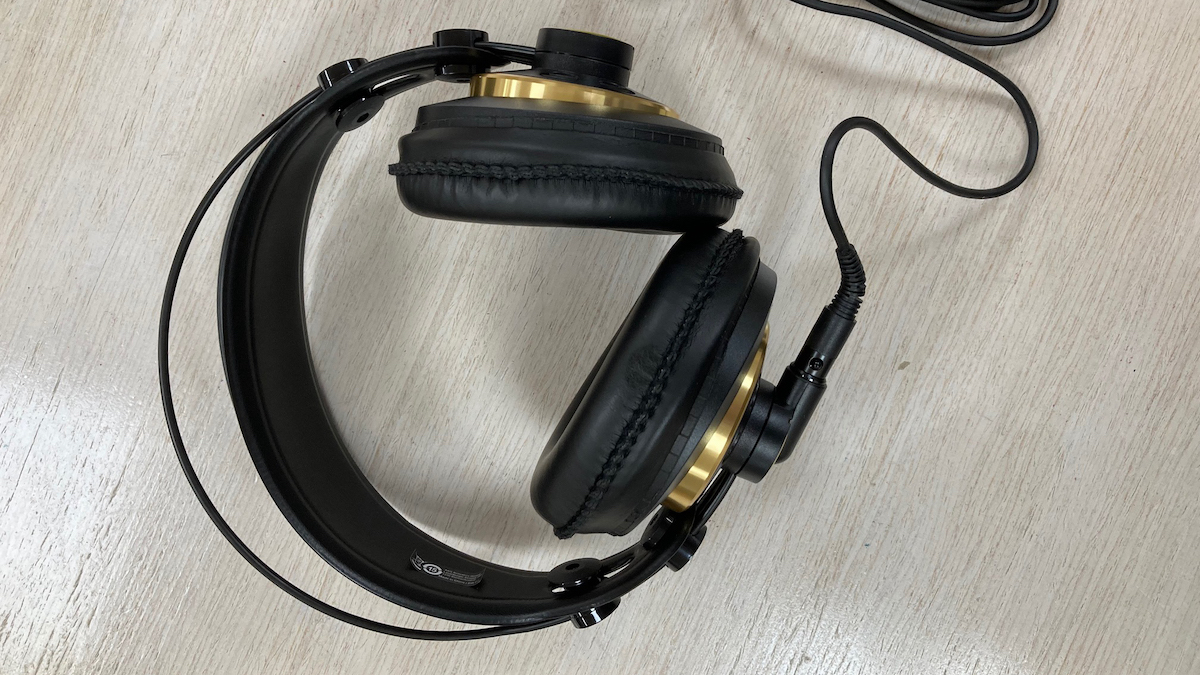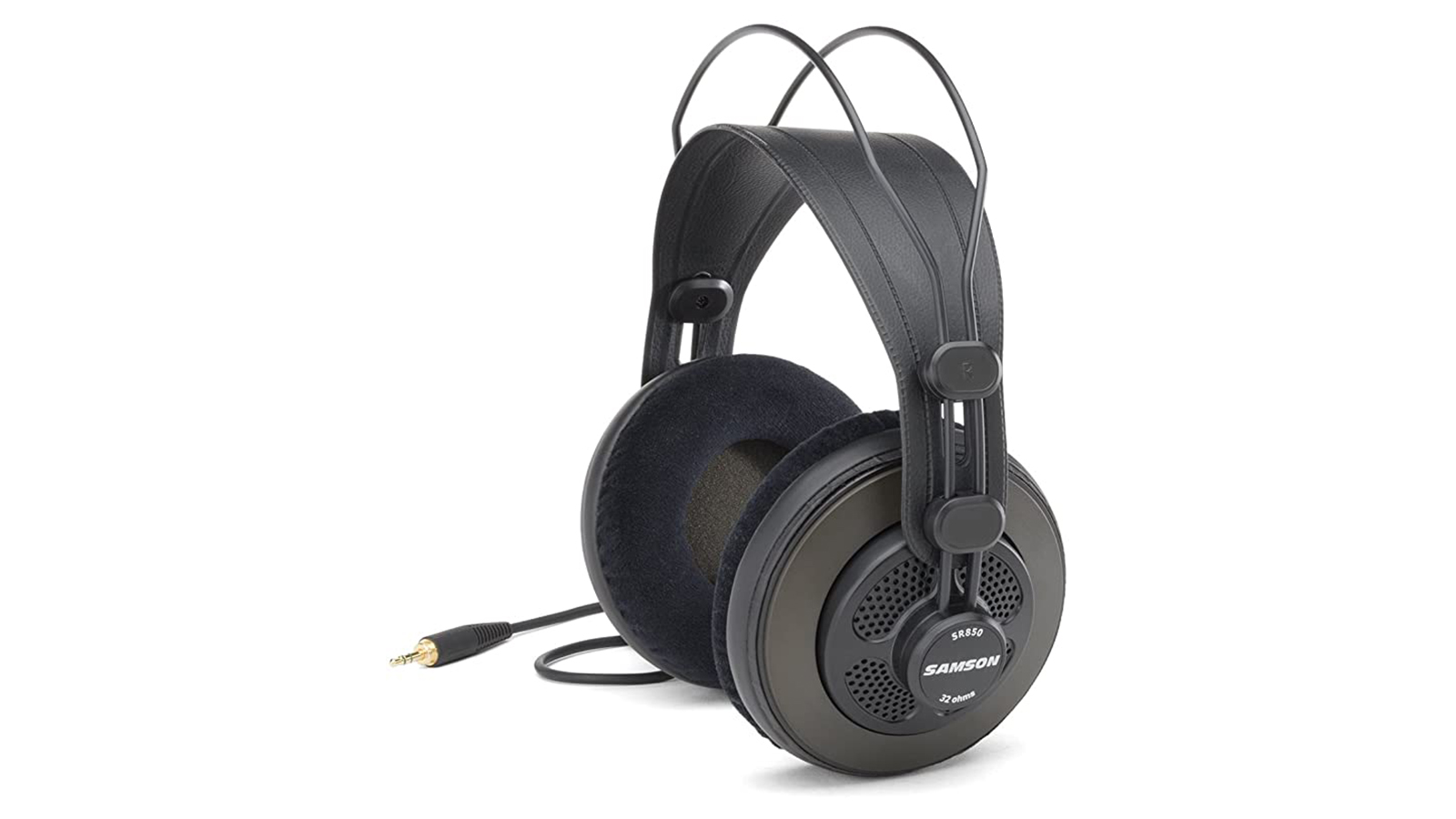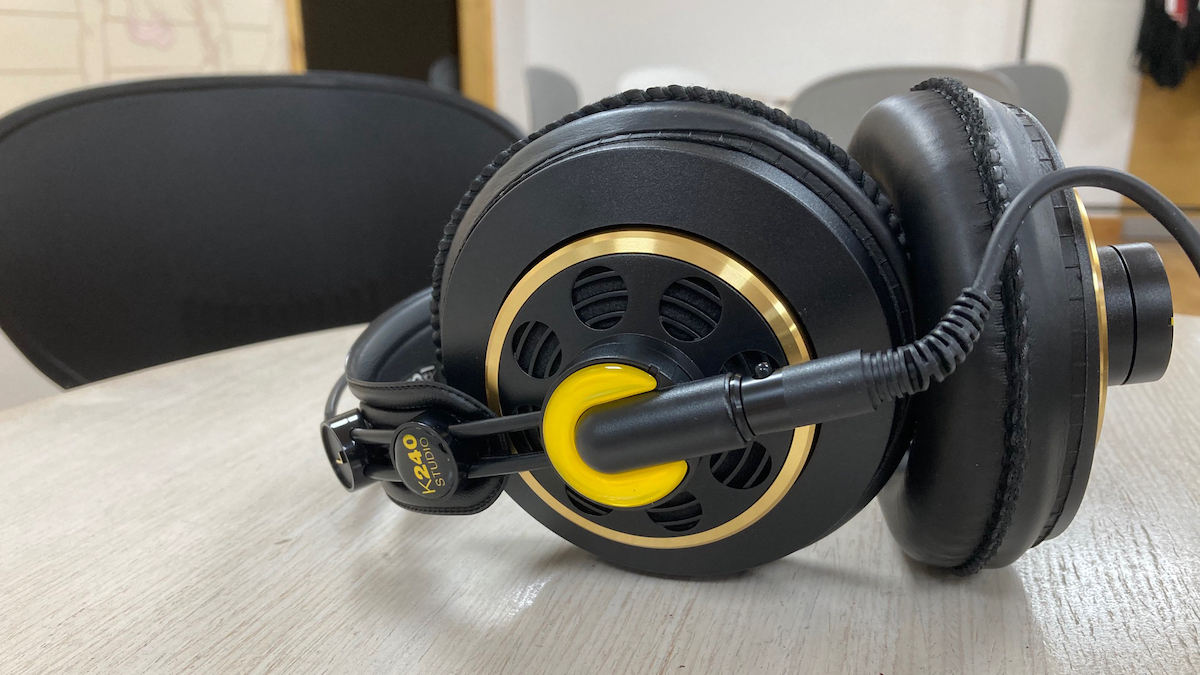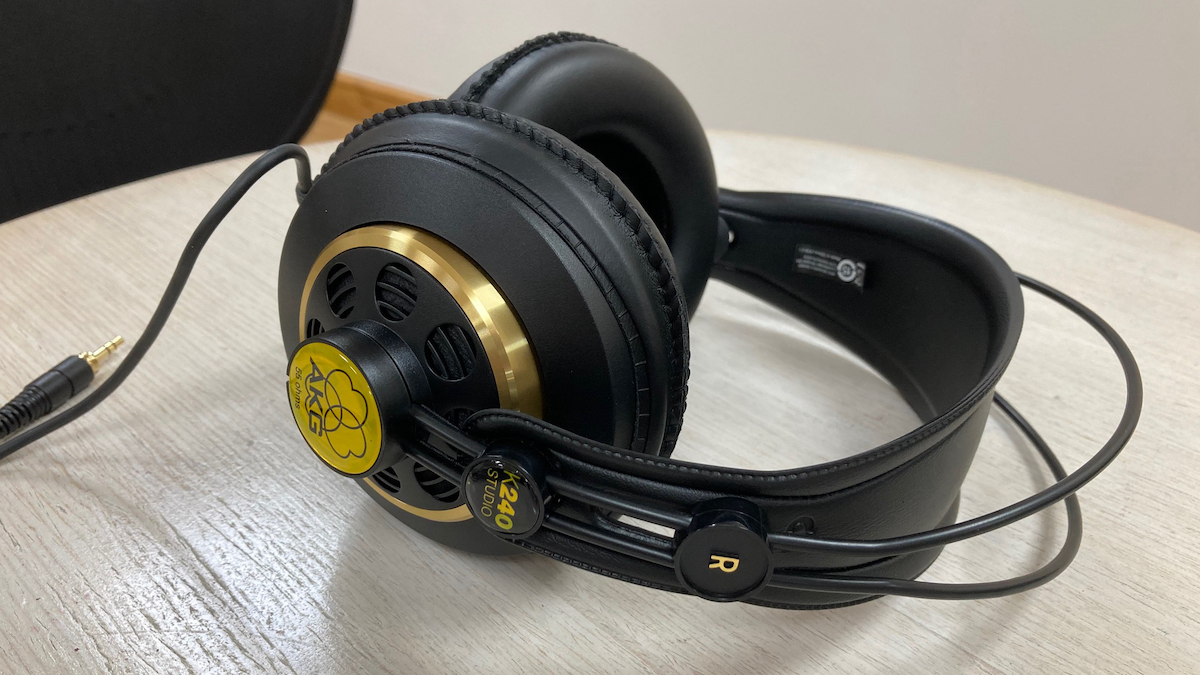MusicRadar Verdict
For checking your mix's stereo image, or enjoying a natural, detailed sound when listening to non-bass dependent music at a moderate level in a quiet environment, the K240 Studio can absolutely shine, but there are better options out there for music-makers.
Pros
- +
Detailed, spacey sound
- +
Classic design
- +
Comfortable
Cons
- -
Needs to be driven hard
- -
A bit delicate for studio use
- -
Poor isolation
MusicRadar's got your back
AKG K240 Studio headphones review: What is it?
A classic, semi-open headphone design aimed at discerning studio professionals, the AKG K240 Studio is derived from the original K240 studio headphone that first appeared in the 1970’s. It’s a popular, almost iconic design that’s more than stood the test of time, and a pair of K240's seem to have found their way into a vast number of professional studios over the past few decades.
Visually, the K240 Studio you can buy today is a blend of retro and modern design cues. The uniquely familiar, self-adjusting dual-headrail headband design, though practical, isn’t necessarily for everyone, giving these cans a somewhat period 70’s look. In an effort to balance this, the classic, all-black design of our review sample sported added cough-lozenge yellow accents in the centre of the ear cups, giving the cans a more modern twist. Circular, metallic gold trims surround the ear cup vents, and there’s a large gold AKG logo on the headband to assist with orientation, aided by gold L/R indicator labels located on the adjustment points on each side of the headband.
Bundled accessories are rather minimal - you do get a standard, screw-on 3.5-6.3mm adapter, but there’s only one, 3m long straight cable in the box. It is detachable and very sturdy, but if you’re not a fan of long cables because of how they can get in the way in some cases, there’s no shorter alternative included. The cable does lock securely into the left ear cup though, and replacement cables are available to order from AKG’s website. On the portability front, we wouldn’t say the K240 was a particularly portable design. Its rather bulky profile and lightweight, outwardly fragile demeanour made us think twice about squishing it into our laptop bag, especially since, unlike many other headphones in this price range, there’s no case or protective pouch of any kind included in the package.
AKG K240 Studio headphones review: Performance & verdict

Comfort-wise, the K240 Studio scores highly. Clamping force is light, as are the cans themselves, making them easy to live with for extended periods of listening, especially if you wear glasses. The self-adjusting headband - a signature AKG design feature - adds its weight, or rather lack of it, to the equation, conforming to the size and shape of the wearer’s head almost automatically.
This rather ingenious system works by using the top of your head to push upwards on the inner part of the headband, which in turn stretches out loops of elastic attached to the ends of the inner saddle as you pull down on the ear cups to position them on your ears. Although the elastics look as if they can handle the task, we’re not sure how they would cope with repeated heavy use in the studio. We’re not sure if these are replaceable, so longevity could be a question mark here.
Like most semi-open headphones, isolation from your surroundings isn’t great - the ear cups hardly block out any noise at all, due to them being ventilated through the backs, allowing air, and therefore sound, to pass through. This is opposed to the more traditional closed-back design of studio headphone, where the ear cup is a sealed unit that cuts down on sounds leaking in or out. The not-so-great isolation here, then, is more an inherent flaw in the design of this particular type of headphone, and certainly not a drawback unique to the K240’s themselves.
Testing times

In our tests, the K240's semi-open design meant that everyone in the immediate vicinity could clearly hear what we were listening to, so these are not for you if you’re intending to use them on crowded trains, in a quiet office environment or when recording with microphones.
Want all the hottest music and gear news, reviews, deals, features and more, direct to your inbox? Sign up here.
In terms of how the K240 sounds overall, we found them detailed, spacey and natural-sounding. We couldn’t fault the overall clarity, with plenty of detail discernible at each end of the spectrum and a soundstage that was smile-inducingly wide.
In terms of how the K240 sounds overall, we found them detailed, spacey and natural-sounding.
However, we were a little disappointed to find them not very loud and a bit lacking in ‘oomph’. Everything’s there, it all just sounded a bit distant - at just 55 ohms impedance, you’d expect these to be louder, more present, and punchier. Listening to our test playlist, transient response was okay, but we just didn’t feel particularly involved in the music, and with very little sub-bass emphasis, we had to drive our test computer’s outputs harder than usual to get to that stank-face, head nod stage.
In use with a digital piano, the semi-open design’s lack of isolation meant that we had to crank the instrument’s volume up to drown out the thudding of our fingers on the keys, which in turn meant that other people in the room could easily hear what we were playing. For the same reason, if you’re after a set of cans to use with an electronic drum kit, it might be better to look elsewhere, as the noise of the sticks hitting the pads will be almost as audible as the drum sounds coming through the cans.

Great-sounding, extremely budget-friendly over-ear semi open headphones for audiophiles and studio professionals.
Grado SR80e
A compact, completely open-back on-ear headphone that rests on your ears, instead of around them, delivering a sound that’s warm, rich and detailed.
On the plus side though, this design does give you more of a realistic perception of space - you feel as if the sound is coming from outside your head, as opposed to the internalising effect delivered by most closed-back cans. If the open sound is what you prefer, the K240 delivers this in spades - we often had to take them off to check that we'd plugged them in!
So to sum up, for checking your mix's stereo image, or enjoying a natural, detailed sound when listening to non-bass dependent music at a moderate level in a quiet environment, the K240 Studio can absolutely shine, particular when you consider the low price. For almost anything else though, we’d recommend almost anything else.
AKG K240 Studio headphones review: Specification

- Type: Dynamic, semi-open, circumaural
- Frequency response: 15-25,000Hz
- Impedance: 55ohm
- Weight without cable: 240g
- Cable: 3m, straight, detachable
- Contact: AKG
Dave has been making music with computers since 1988 and his engineering, programming and keyboard-playing has featured on recordings by artists including George Michael, Kylie and Gary Barlow. A music technology writer since 2007, he’s Computer Music’s long-serving songwriting and music theory columnist, iCreate magazine’s resident Logic Pro expert and a regular contributor to MusicRadar and Attack Magazine. He also lectures on synthesis at Leeds Conservatoire of Music and is the author of Avid Pro Tools Basics.

